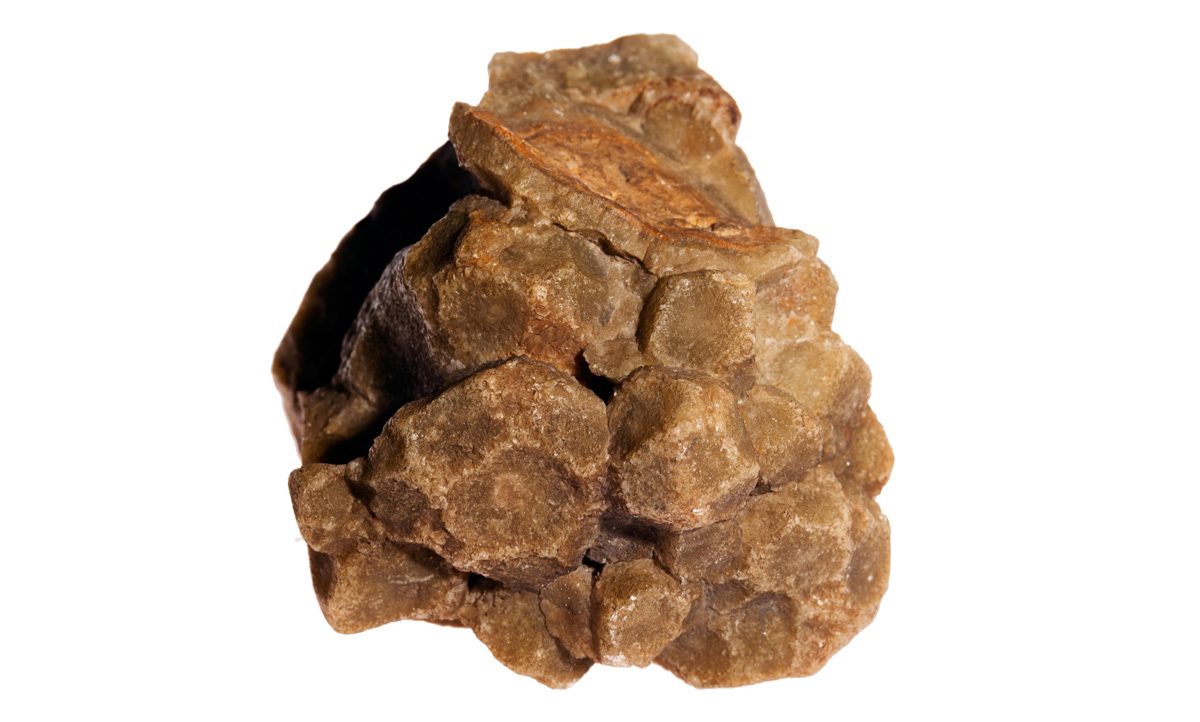
PHYSICAL PROPERTIES
- GROUP Carbonates
- COMPOSITION ZnCO3
- COLOR White, blue, green, yellow, brown, pink, colourless
- CRYSTALLINE SYSTEM Hexagonal / trigonal
- CRYSTALLINE HABIT Botroidal, rhombohedral, scalenohedral
- HARDNESS 4 - 4.5
- FRACTURE Unequal to conchoidal
- EXFOLIATION Rhombohedral
- SHINE Vitreous to pearly
- STRIP White
- TRANSPARENCY From translucent to opaque
- SPECIFIC WEIGHT 4.4
- REFRACTIVE INDEX 1.62 - 1.85
MINERALOGICAL CHARACTERISTICS
The smithsonite or zinc spar is a zinc carbonate that is usually found in the form of a stalactite or botryoidal mass. It can be colorless, white, yellow, green, pink or blue. It forms scalenohedrons and rhombohedrons, often with curves, in the shape of a grain of rice, and renicular, stalactitic, crusty or compact aggregates.
Smithsonite appears in oxidation zones of most zinc ore deposits and in adjacent calcareous rocks.
Its name comes from the founder of the Smithsonian Institution in the United States, James Smithson.
Deposits: United States, Australia, Germany, Greece, Italy, Mexico, Zambia and Namibia.
THERAPEUTIC PROPERTIES
The smithsonite is considered a stone of warm and calming energy. It brings healing to the inner child and helps to gently dissolve emotional pain. It favors the alignment of the chakras and helps to enhance psychic abilities. It favors leadership and brings harmony in relationships. On a healing level, it is said to be beneficial for the immune system, digestive system, fertility, breasts, and osteoporosis.


